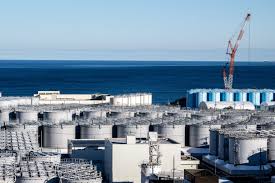
Taiwan’s AI Boom Sparks Debate Over Phasing Out Nuclear Power

 :
| Updated On: 15-May-2025 @ 12:30 pm
:
| Updated On: 15-May-2025 @ 12:30 pmSHARE
Taiwan is preparing to shut down its last nuclear reactor amid a rapidly growing energy demand driven by the island’s booming semiconductor industry and artificial intelligence (AI) sector. The Ministry of Economic Affairs projects Taiwan’s electricity needs will rise by 12-13% by 2030, with much of this increase attributed to companies like Taiwan Semiconductor Manufacturing Company (TSMC), which alone is expected to consume as much power as about one-quarter of the island’s 23 million residents. This rising energy appetite complicates Taiwan’s ambitious goal to achieve net-zero carbon emissions by 2050, which relies heavily on increasing renewable energy’s share from the current 12% to around 60-70%.
Proponents of nuclear power argue it is the most viable solution to balance Taiwan’s industrial growth and environmental commitments. Recently, Taiwan’s legislature passed an amendment allowing nuclear plants to apply for license extensions beyond the current 40-year operation limit. This move, pushed by opposition parties Kuomintang and Taiwan People’s Party, contrasts with the ruling Democratic Progressive Party (DPP), which came to power in 2016 with a pledge to create a “nuclear-free homeland.” Although the amendment will not prevent the scheduled closure of the Maanshan Nuclear Power Plant’s No. 2 reactor, it signals a possible shift in policy, casting doubt on Taiwan’s long-standing anti-nuclear stance.
Taiwan’s government, while stating no immediate plans for new nuclear projects, has shown openness to restarting decommissioned reactors if safety can be guaranteed and public consensus is reached. However, any such revival would take years to materialize. Taiwan’s civilian nuclear program began in the 1950s with U.S. assistance, and by 1990, state-owned Taipower operated three plants supplying over one-third of the island’s electricity.
Supporters like Angelica Oung of the Clean Energy Transition Alliance highlight that nuclear power previously provided around 10% of Taiwan’s energy when the DPP took power. She argues that renewable energy sources are unstable and insufficient on their own, citing solar energy’s reliance on batteries and Japan’s recent decision to return to nuclear power by 2040 as examples.
However, opposition to nuclear energy runs deep in Taiwan, rooted in decades of activism sparked by events such as the 1986 Chernobyl disaster and protests against nuclear waste dumping on Orchid Island. The 2011 Fukushima disaster further intensified public resistance. Additionally, in the 1990s, concerns arose when about 10,000 people were exposed to low radiation levels from radioactive scrap metals in construction.
Taipei halted a planned fourth nuclear plant in 2000 after environmental protests, and a 2021 referendum to restart the project was narrowly defeated. Critics like Chia-wei Chao of the Taiwan Climate Action Network argue that developing nuclear energy diverts funds from renewable projects, and Taiwan’s nuclear plants were built without adequate consideration of earthquake and tsunami risks. Upgrading existing plants to modern safety standards would be costly, and nuclear energy would not necessarily mean cheaper electricity.
Lena Chang, a Greenpeace East Asia campaigner, warns that reviving nuclear energy is both expensive and potentially dangerous, especially for a small island vulnerable to nuclear disasters. Greenpeace opposes restarting or expanding nuclear power due to unresolved safety and environmental risks.
Both Chang and Chao emphasize that the semiconductor industry, particularly giants like TSMC, should bear responsibility for their substantial energy demands by investing in renewable energy rather than relying solely on Taipower, which is funded by taxpayers. Despite concerns about energy supply tightness in the near future, Chao believes the current resources remain sufficient for now, with industry leaders encouraged to lead the transition to greener energy sources.
Overall, Taiwan faces a complex challenge balancing energy security, environmental sustainability, and industrial growth as it navigates its future energy policies amid growing demand and public apprehension toward nuclear power.